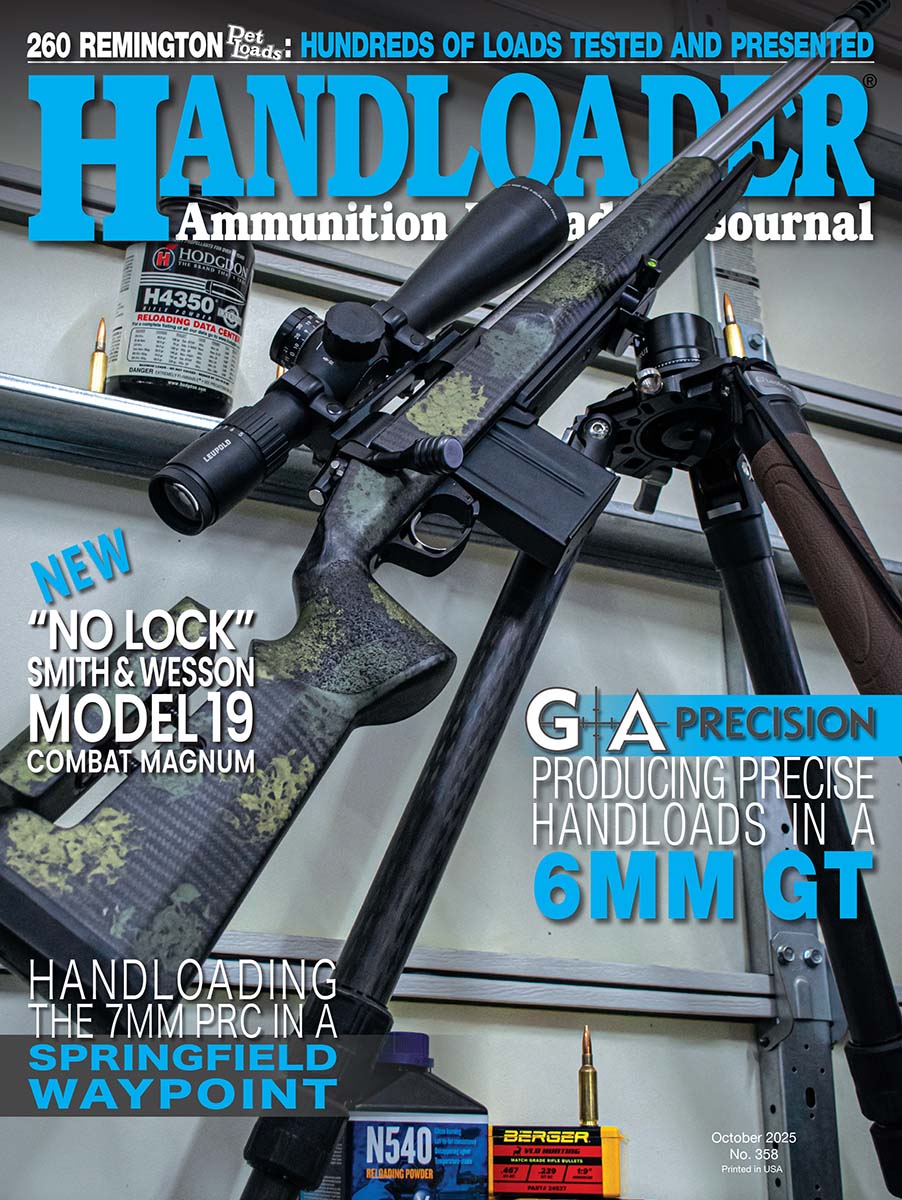44 Magnum in a Carbine
Loading for Longer
other By: Terry Wieland | October, 25
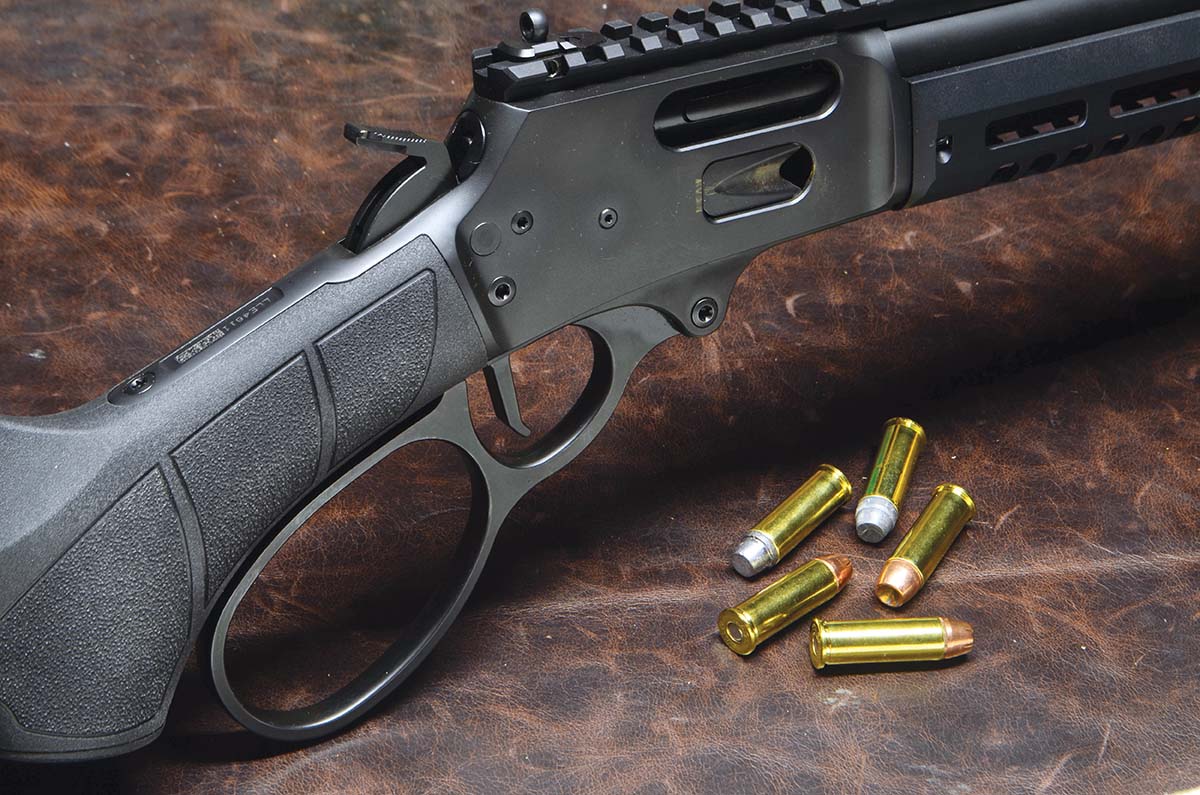
On the frontier, it made good sense to have interchangeable ammunition, and it was followed shortly by the 38-40 and 32-20. More recently, we’ve done the same with the 357 Magnum, 44 Magnum and 45 Colt. While the idea is just as attractive now as 150 years ago – albeit for different reasons – since resupply is rarely a factor, ammunition that is interchangeable and works equally well in a rifle and pistol has proven challenging, if not impossible.
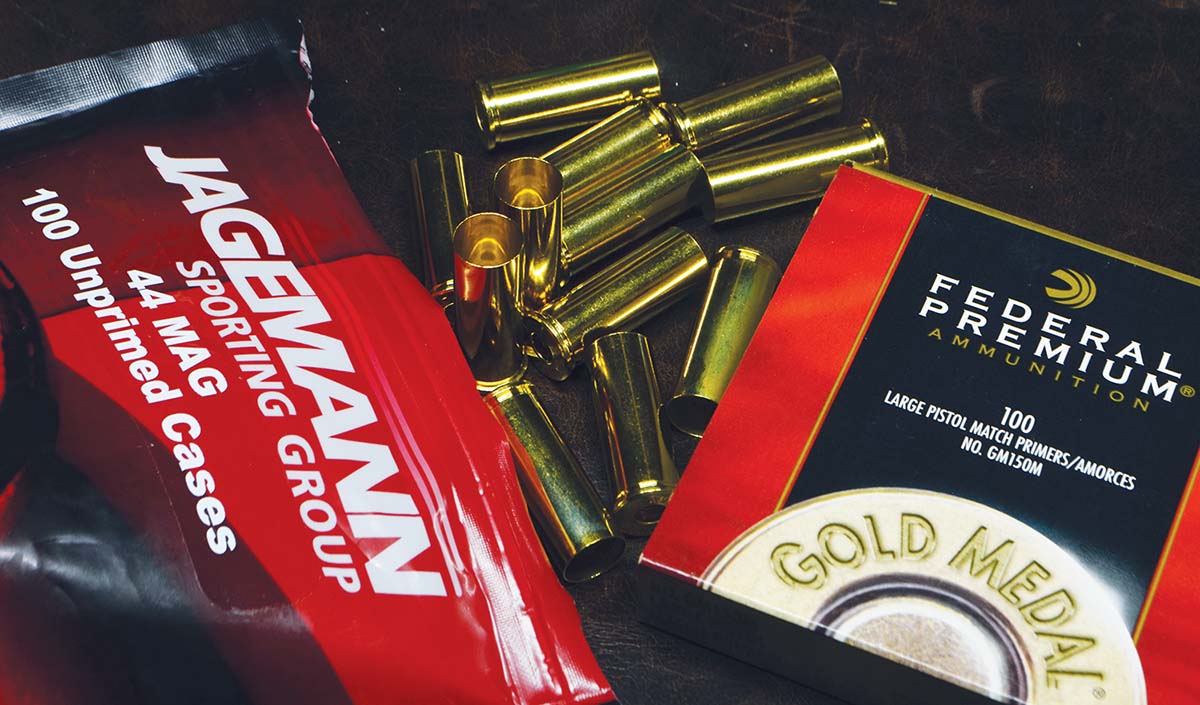
Thinking it might be just my own ineptitude, I went back to a 1983 “Pet Loads” article by Ken Waters wherein he was searching for loads for a Browning B-92 carbine and a Ruger Redhawk. Waters’s conclusion was that, while you can put together loads that function in both, it will always be a compromise, and you will not be getting the maximum performance possible from the rifle.
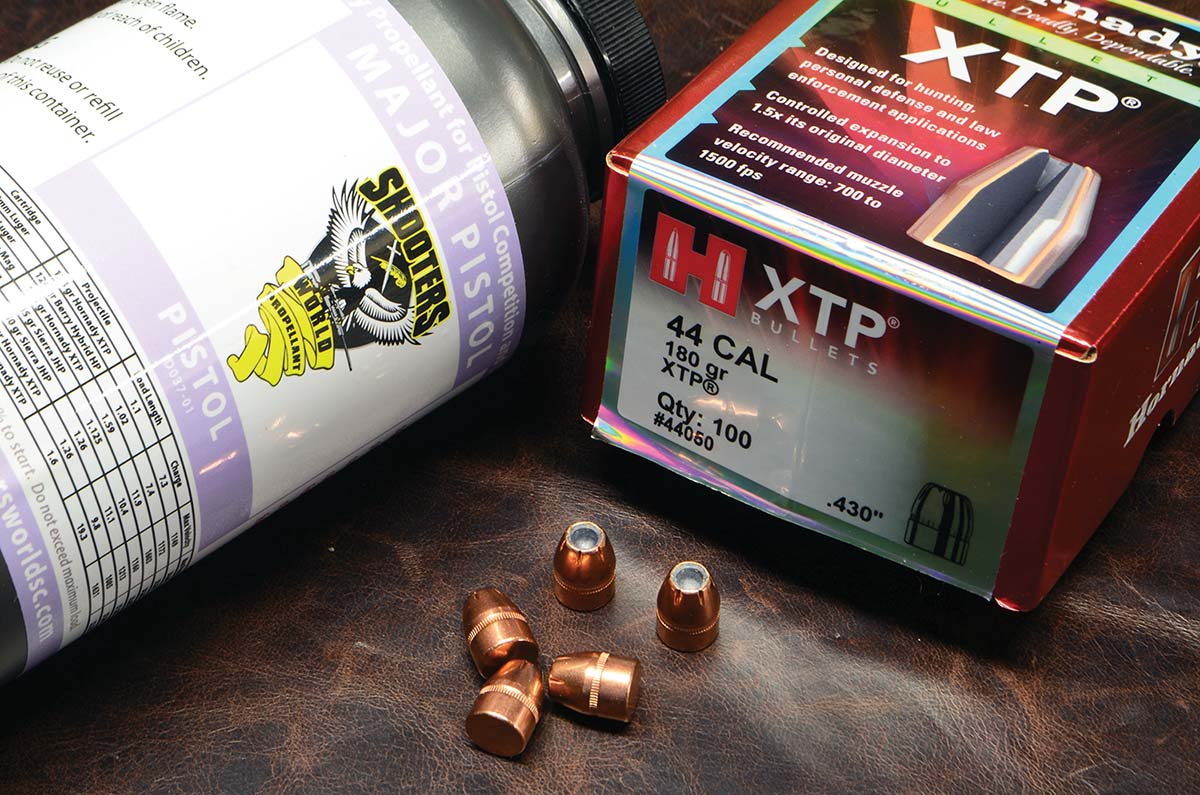
There were two rifles I could have used: A Ruger 77/44 and a Smith & Wesson (S&W) Model 1854 Stealth Hunter. Given the differences (18.5-inch barrel vs. 16.3-inch barrel, rotary magazine vs. tubular magazine), multiplied by the problems, which I shall get to, trying to include both would have made the project too unwieldy, so I went with the new 1854. A lever-action 44 Magnum with a tubular magazine is far more common anyway, dating back to the Marlin Model 336 in 1965.
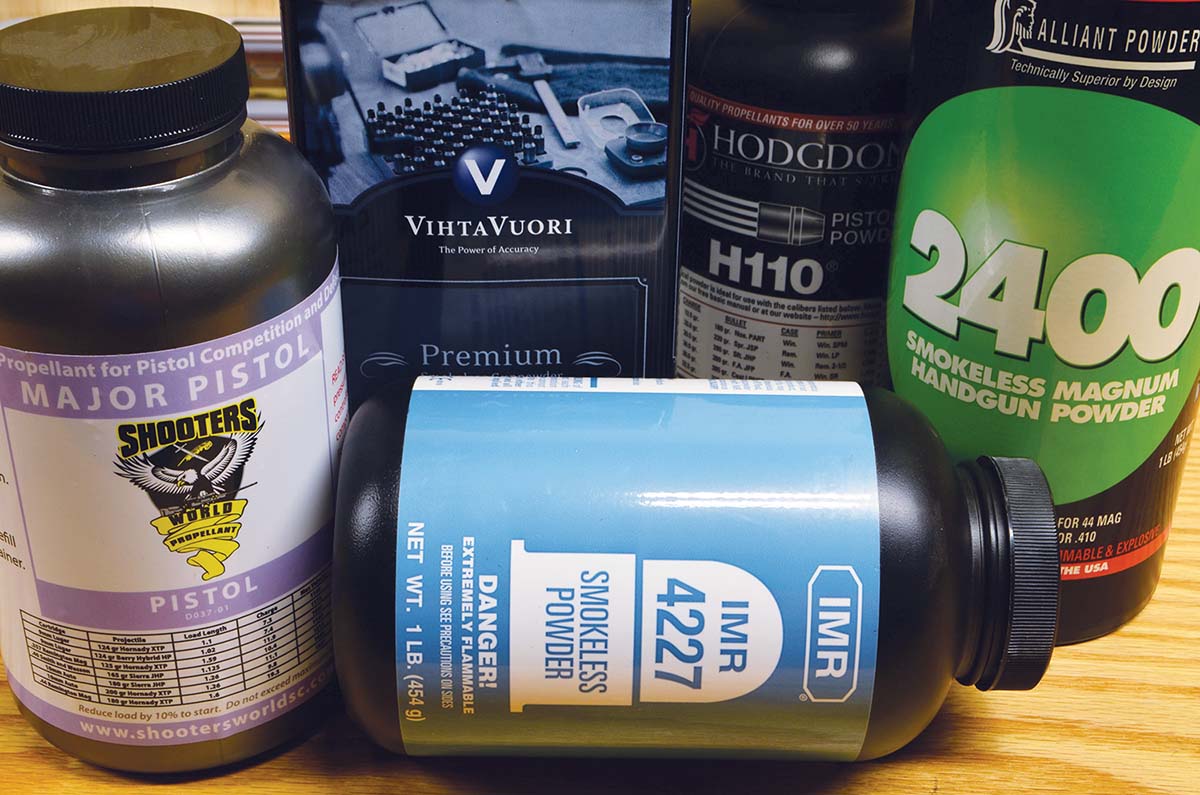
Since the Model 1854 works equally well with both 44 Magnum and 44 Special ammunition, there is some leeway in terms of length, but we still have to keep it in mind. There are also a few .429-diameter spitzers around, some of which are solid copper alloy. This makes them even longer, so even if the spitzer tip is not an issue, the extra length eats into powder capacity.
Finally, any bullet we choose must have a cannelure (or crimping groove) in the right place. Rifle or revolver, with the 44 Magnum, you need a firm crimp.
Broadly speaking, with a rifle, we want a heavier bullet, a higher velocity, or both. This usually requires slower-burning powders, and the longer barrel can make use of that. So, no problem there. Except, there is.
Loading data specifically for rifles or carbines in 44 Magnum is in short supply, and the powders it calls for may or may not be easy to find.
As I write this, we are severely limited in terms of available powders. Many are out of stock, some oldies have been discontinued completely and others are unavailable, with no firm indication whether they will ever be available again.
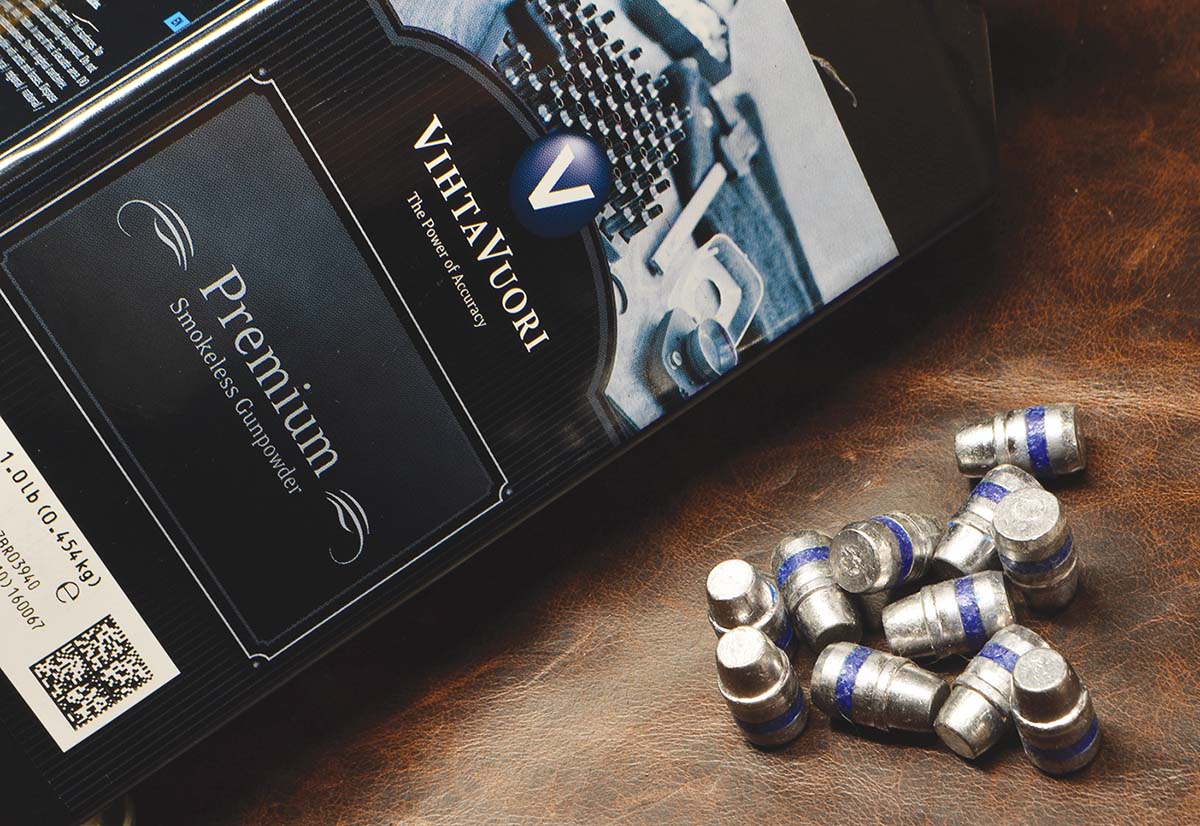
Most conventional .429 bullets are intended for handguns, at handgun velocities. When the 444 Marlin was introduced in 1964, it was touted as a moose and bear cartridge, firing a 240-grain bullet at 2,350 feet per second (fps). Unfortunately, it soon acquired a bad reputation because its factory load used a handgun bullet. At that velocity on the hard muscles of a moose, the bullet had a tendency to over-expand and fail to penetrate. Only when loaded with heavier bullets, with stouter jackets, did it reach its potential.
This problem is not so acute with the 44 Magnum, but most of the lighter .429s, from 180 to 230 grains, for example, are not intended for high velocities. Some are even made specifically, with still thinner jackets, for use in the 44 Special. (With these, there is usually a warning on the box.) For all these reasons, if you intend to hunt big game, you need to pay close attention to the bullet you use.
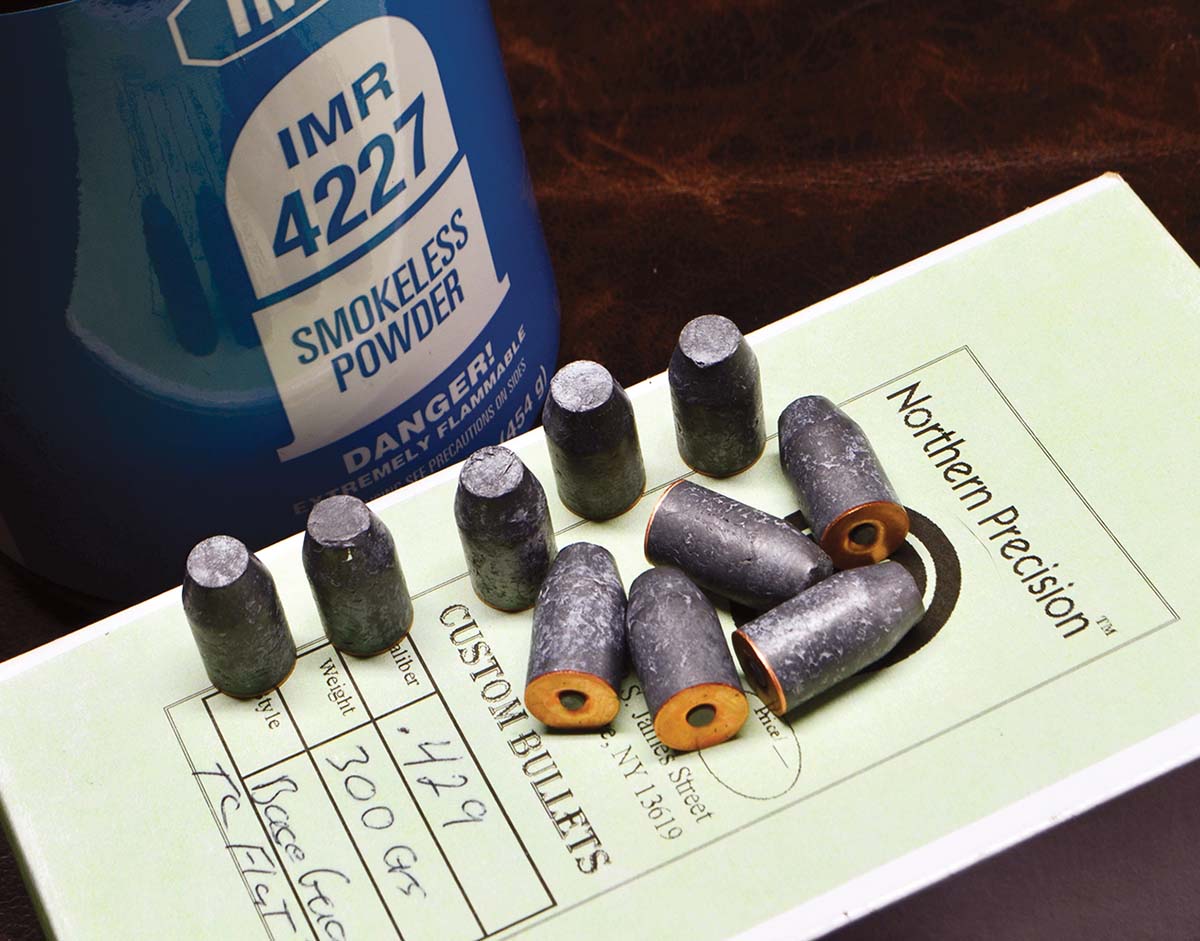
Cast bullets? These are eminently usable, but above a certain velocity, usually listed as 1,500 fps, they are prone to leading, and the softer the lead, the greater the problem.
Now for powders.
In 1983, Waters identified four as best for heavy loads in the 44 Magnum: H-110, W-296, N-123 and Alliant 2400. The Norma powder is long gone, while 2400 is listed as out of stock and unavailable everywhere. Hodgdon still has H-110 and W-296.
When one manufacturer’s products disappear from the market, as Alliant’s have now (Bullseye, Unique, 2400), handloaders look for alternatives, which increases pressure on other makers. Right now, several of the Shooters World powders are out of stock, probably for this reason, although they do have Major Pistol, and it’s a good powder for heavy 44 Magnum loads.
Hemmed in by the limitations on powder and bullet choices, I finally ended up just looking for some combinations that work, using powders and bullets I already had on hand regardless of current availability, although none that are definitely discontinued. The table provides the loads that showed the most promise.
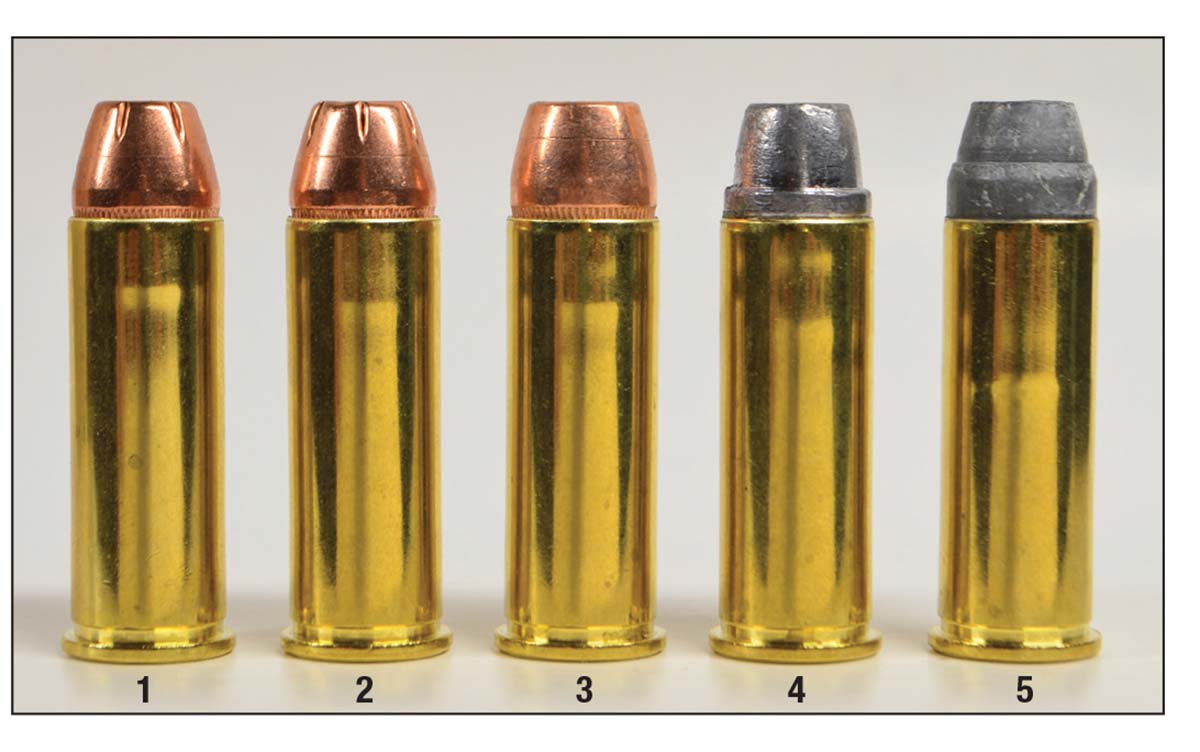
An interesting note on pressures, taken from Hodgdon’s data: In its loads using H-110 and a 240-grain bullet in an 8.275-inch barrel, the starting load of 23.0 grains produced 1,413 fps and 25,200 copper units of pressure (CUP); the maximum load of 24.0 grains – just one grain more – upped the velocity by 109 fps, but boosted the pressure by 11,000 CUP to 36,200 CUP.
The SAAMI maximum is listed as 36,000 pounds per square inch (psi). There is no direct correlation between psi and CUP, but older manuals listed 43,500 CUP as the maximum allowable pressure. That being the case, over-charging with H-110 by even a half-grain could put your pressures into dangerous territory.
In 1983, Ken Waters was careful to stress the hazards on several fronts. Putting together a hot load that pushed pressure maximums might be safe in a rifle but dangerous in a revolver. Since there is always the possibility of mislabeling or accidentally using rifle ammunition in a revolver, he felt the simplest way to avoid this was never to load anything of that nature in the first place. Being naturally of an over-cautious bent, I enthusiastically agree.
As Waters pointed out, if reasonable loads in your rifle are not sufficient for your purpose, then the answer is to get yourself a more powerful rifle.
The question is, then, what are reasonable uses for a 44 Magnum carbine? Given its limitations, I would say 125 yards would be a reasonable maximum effective range, on game no larger than whitetailed deer. I would also not bother with anything except iron sights, which means using the rifle mostly on things like feral hogs at 75 to 100 yards.
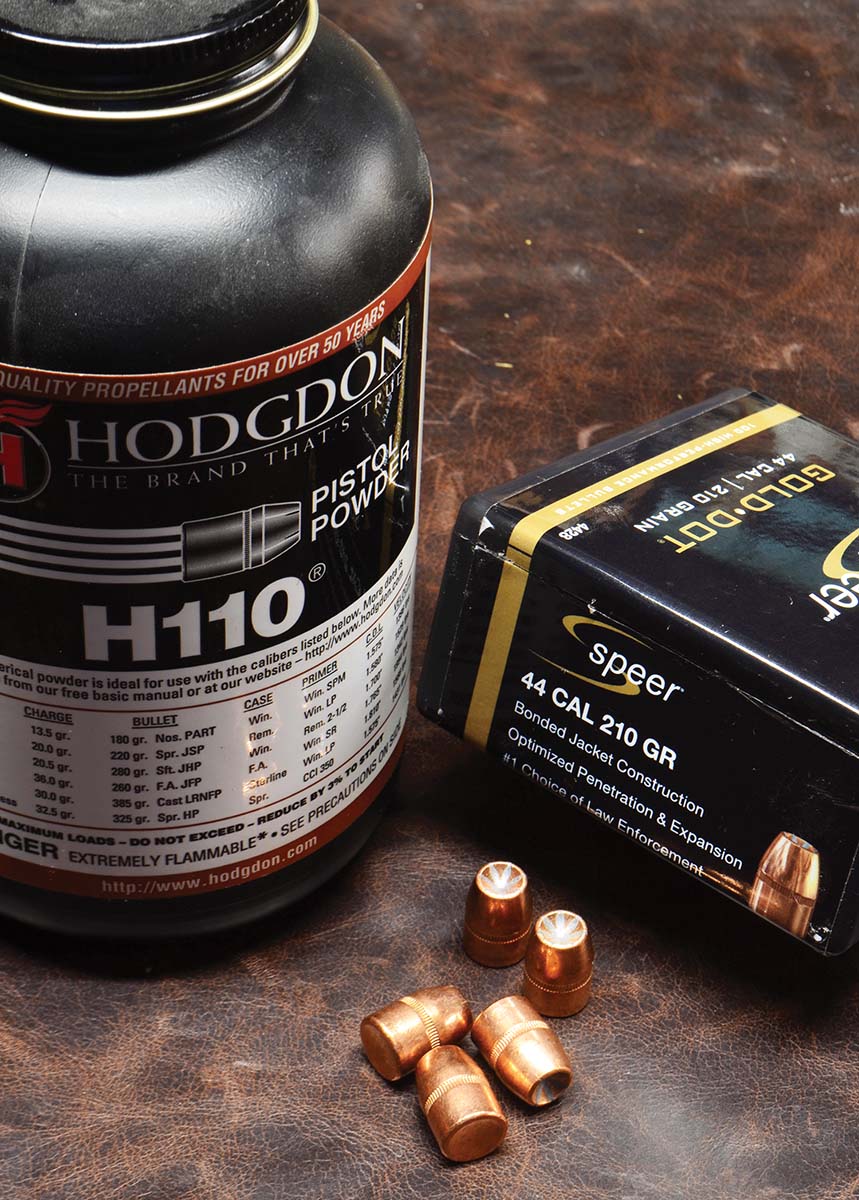
At the other end of the scale, I tried some of Northern Precision’s 300-grain Base Guard lead flat-nosed bullets. These are a soft lead alloy with a brass disk attached to the base to prevent gas cutting. Bill Noody, proprietor of Northern Precision, told me it’s a Corbin design and, to prevent leading, recommended not to exceed 1,500 fps.
In theory, a big, soft bullet like this, at moderate velocity, would echo the type of soft lead solid that African hunters found so effective in the late 1800s, of which John “Pondoro” Taylor thought very highly. With a maximum charge of IMR-4227, the velocity slightly exceeded 1,500 fps, and backing off a grain not only reduced the velocity but improved accuracy to a point where I would be comfortable using it on deer out to 50 to 75 yards. Another alternative is the same bullet in 250 grains. Bill says he can make it in a wide variety of weights, on special order, so it seems well worth investigating.
The Vihtavuori load with a hard cast bullet is about the best of the bunch in terms of a dual-purpose (rifle and revolver) load.
For reasons I’m at a loss to explain, I had no 240-grain jacketed bullets on hand, none of my handloading acquaintances had any, and the local stores were sold out. All I had available were the Missouri Bullet Company slugs, but these give a good indication of velocity. In this particular case, the N340 load is a good one for keeping leading to a minimum.
For decades, Alliant’s 2400 has been one of the best powders for 44 Magnum loads, and this test merely confirms that. It has not been officially discontinued, so it was included here.
In an ideal world, I would have been able to pick out the five or six best powders, paired them with a range of bullets that would serve all purposes, and come up with two or three loads to do the job. Alas, the world today is far from ideal, and given the state of military requirements, both here and internationally, it’s impossible to tell when – if ever – the situation will return to what we’ve been lucky enough to consider normal.
Meanwhile, I’m doling out my remaining stores of 2400, Unique, Bullseye, R-19, R-22, etc., from Alliant very sparingly, and the same with a few Hodgdon and IMR numbers. For several of these, there is no obvious substitute that works as well.
As for the rifle and revolver idea load, you’d think we’d have it perfected after 150 years. Alas, we do not.
.jpg)


